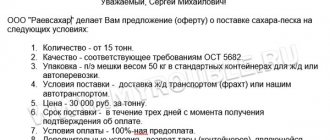How to write a real business plan: useful tips
- A detailed plan is a plus, but you don’t need to meticulously polish every letter. It is worth remembering that this is still a plan and it is impossible to provide for every little detail in it. Life will make its own adjustments even to an ideal document drawn up according to all the rules.
- To draw up a plan, you must use real calculations and numbers. If this is a furniture purchase, it is worth calling several stores and asking for prices. If courier services - interview 3-4 companies about conditions and prices. Internet advertising? Make a detailed list of marketing moves, find out specific methods of promotion, compare their effectiveness and cost. When analyzing the market, use available statistics and independently conduct a survey or questionnaire among potential clients.
- Almost any business requires a period of promotion. You should not include maximum expenses in your business plan. An experienced businessman opens a point with the expectation of a small volume of sales and services, as a trial option. It is better to expand your business as you make a profit than to spend all your cash on renovations and renting expensive premises, super-expensive advertising - and be left without a salary for yourself and your employees.
Important! Do what you are good at. And if you don’t understand it, get ready to figure it out in detail and corrosively. Maximum useful information – 75% success.
What can you do in this section of the E-Planificator Online Designer?
Fill out the forms you need
Filling out the forms on this page is done using:
- information posted in the “Theory” chapters;
- examples of filling out forms in the form of pictures
- videos with examples of filling out forms (on the page Examples of working with the Designer, as well as on each of the corresponding pages of your personal account).
See what you have previously entered into these forms
- In text forms, the text previously entered by the user is shown.
Display individual financial indicators calculated by the Constructor.
Build tables and charts in step:
- 11.1. Calculation of investment efficiency (NPV, IRR, PB, PI): NPV distribution by year;
- Dependence of NPV on the discount rate;
- Investment efficiency.
- Finding the break-even point;
- Key financial indicators: liquidity and financial stability ratios, profitability indicators and business activity ratios.
- “Revenue + semi-fixed and variable costs” (for each product);
- Balance sheets (tabular form) (for year No. 1, year No. 2, five years and years from six to ten) - according to RAS or IFRS;
Clone projects, compare business plans with each other based on key indicators at the step:
- 11.7. Comparison of projects.
Discounted method of calculating business return on investment
In reality, revenue and profit flow unevenly. In addition, the purchasing power of money, that is, its value, decreases over time. Agree, today for 1000 rubles. you can buy a lot less goods than 5 years ago. If you calculate a simple payback period, then this factor is not taken into account. But there is a method that allows you to adjust for changes in the value of money over time. We are talking about a discounted payback period.
The discounted calculation method is based on taking into account changes in the value of money in the future. That is, future income is multiplied by the corresponding coefficient, as a result of which the accuracy of calculations increases.
- Example 1
Let's take the same initial data as in the previous examples. Let's calculate the discounted payback period of the business at a discount rate of 10%.
| Period (year) | 0 | 1 | 2 | 3 | 4 | 5 |
| Investments, thousand rubles | -900 | |||||
| Profit, thousand rubles | 300 | 300 | 300 | 300 | 300 | |
| Discount | (1 + 0,1) = 1,1 | (1 + 0,1)2 = 1,21 | (1 + 0,1)3 = 1,33 | (1 + 0,1)4 = 1,46 | (1 + 0,1)5 = 1,61 | |
| Discounted Cash Flow | 272,73 | 247,93 | 225,39 | 204,9 | 186,28 | |
| Discounted cash flow on an accrual basis, thousand rubles. | -900 | -627,27 | -379,34 | -153,94 | 50,96 | 237,24 |
That is, by applying a discount factor (r), it is possible to take into account the decline in the value of money over time, thus, future income is recalculated at present value.
r = 1 / (1 + E) (n-1), where
E—discount rate;
n is the serial number of the year from the start of the project.
From the calculations in our example it follows that the payback period for the business is 4 years. During this time, the store will receive 950.96 thousand rubles. discounted income, that is, the initial investment will be returned.
Under the same starting conditions, the value of the simple payback period will always be less than the discounted one. This is explained by the fact that money depreciates over time, therefore, the process of paying off a business will actually take longer. In our examples, this difference is one year. The discounted calculation method is more accurate.
Let's consider an example in which specific figures show the return on investment in a business.
Initial data: kiosk selling fast food. The following costs will be required to start the activity:
- for repair work - 20 thousand rubles;
- for the purchase of kitchen equipment, furniture - 100 thousand rubles.
Thus, at the initial stage you will need to invest 120 thousand rubles.
Each month there will be the following expense items:
- kiosk rental (2 sq. m.) – 12 thousand rubles;
- salary (two employees in two shifts) – 60 thousand rubles;
- purchase of raw materials (products, etc.) and other necessary goods (packaging, etc.) – 30 thousand rubles.
We recommend
“Sales channels: formation, performance assessment, management” Read more
The total cost per month will be 102 thousand rubles.
Let's calculate the amount of possible income. One client spends on average 200 rubles. The outlet serves 25 customers per day.
Monthly revenue according to plan = 200 rubles. x 25 people x 30 days (month) = 150 thousand rubles.
Using the above formula, we calculate the simple payback period:
Payback period = investment / (income - expenses)
= 120 thousand rubles. / (150 thousand rubles - 102 thousand rubles) = 2.5 months.
Therefore, the payback period for a fast food business will be 2.5 months.
How is profitability determined?
Calculating the profitability of a business is not so difficult if you have ready-made financial statements at hand. Individual entrepreneurs who do not keep accounting records or are just planning to open their own business will have to bring everything together “by eye.” Profitability is calculated mainly as a percentage. The calculation formula is as follows:
Profitability of production = (Profit on balance / Costs of production and sales) x 100
This calculation will allow you to determine how much profit before taxes falls on 1 ruble of funds spent. For convenience, you can find a convenient online calculator online or download a special program. On average, the normal ratio is 15-35%, but highly depends on the specifics of the commercial activity. For retail trade, 10-15% is a decent result, but for the beauty or construction industry this figure will be small. For these areas you need to start from 50-100%, for legal services, trading in intangible assets - from 100%.
The above calculation shows the nominal value of profitability. There is also real profitability - the one that is determined taking into account inflation. To assess the purchasing power of an enterprise. When the indicator turns out to be low or even negative, this indicates a lack of operational efficiency and impending bankruptcy. A business with high profitability is considered promising, fully receiving a return on investment.
How to correctly calculate a risk forecast - detailed procedure
Since creating a financial plan from scratch takes a lot of time, sometimes it is easier to analyze the existing one and correct weak points. This will speed up the process of generating profit from the organization’s activities.
As they say, risk is a noble cause, but this expression should not be used in business. It is the financial plan that serves to ensure that the company can prevent unpleasant situations in order to avoid losses. It is very important to consider all possible situations and choose the safest solution.
According to the sphere of influence, risks are classified into 3 groups.
Commercial
The reason for commercial risks lies in relationships with investors and partners, and external environmental factors also influence.
External factors of commercial risks are:
- decline in demand for manufactured products/services;
- unexpected appearance of a competitor on the market;
- deception on the part of business partners (supply of low-quality raw materials, delays in the supply of goods, etc.);
- instability of prices for technical support and services.
These are only the most common external reasons that can negatively affect your financial plan. It is very important to consider the scope of the company's activities and consider the impact of each specific unforeseen situation in a timely manner.
Financial
Financial risks include unexpected expense items, as well as unexpected profits.
The reasons for financial risks may lie in the following:
- in late payments for goods/services by customers;
- accounts receivable;
- increased rates from creditors;
- changes in legislation that entail an increase in prices for doing business;
- unstable currency situation on world markets.
Controlling the above risks allows you to avoid possible losses and bankruptcy.
Production
Such risks are associated with changes in the company’s operating mode due to unforeseen circumstances.
The cause of production risk may be:
- insufficient level of qualification of workers;
- protests and strikes that lead to interruptions in the organization’s work schedule;
- production of low-quality products, which entails a decrease in demand for the product and a decrease in sales;
- There is no quality control of manufactured goods.
If such risks are not controlled in a timely manner when drawing up a financial plan, investments in the business will be unjustified (no income, losses growing).
In order to avoid all kinds of risks, it is worth using risk management techniques. To do this, they can use risk resolution tools, as well as techniques to reduce the degree of risk.
Means for resolving risks may be:
- risk avoidance (avoiding a situation that may entail risk, often implies that the investor refuses to make a profit);
- risk retention (responsibility for possible negative consequences rests with the investor making the decision);
- transfer of risk (the investor transfers responsibility for the risk, for example, to an insurance company).
Risk Reduction
This is a reduction in the volume of losses and a decrease in the likelihood of a risky situation occurring. To reduce the likelihood, various techniques and means can be used.
Diversification
The essence of diversification lies in the division of capital between different investors who are connected with each other, as well as different forms of activity of the organization itself, goods produced/services provided. Diversification is the most reasonable and less expensive way to reduce financial risks. But, the risk of investments can be dissipated through diversification, but it is still impossible to reduce the probability to zero. This is due to the fact that there are external factors (unrelated to the choice of investment objects) that cannot be influenced downwards.
Obtaining additional data and information
Maximum knowledge of information allows for the most accurate forecasting and reduces the likelihood of risks for decision making - this makes data and information as valuable as possible.
The cost of complete information can be calculated as the difference between the expected value of any acquisition or investment when there is complete information and the expected value when the information is incomplete.
Limitation
The essence of limiting is setting a limit - the maximum allowable amount of expenses, sales, lending, etc.
Self-insurance
This procedure means that the entrepreneur decides to insure himself, rather than purchasing insurance from insurance companies. This reduces the cost of capital for insurance. The essence of self-insurance is the creation of reserve funds, the task of the procedure is to overcome temporary financial difficulties as quickly as possible.










